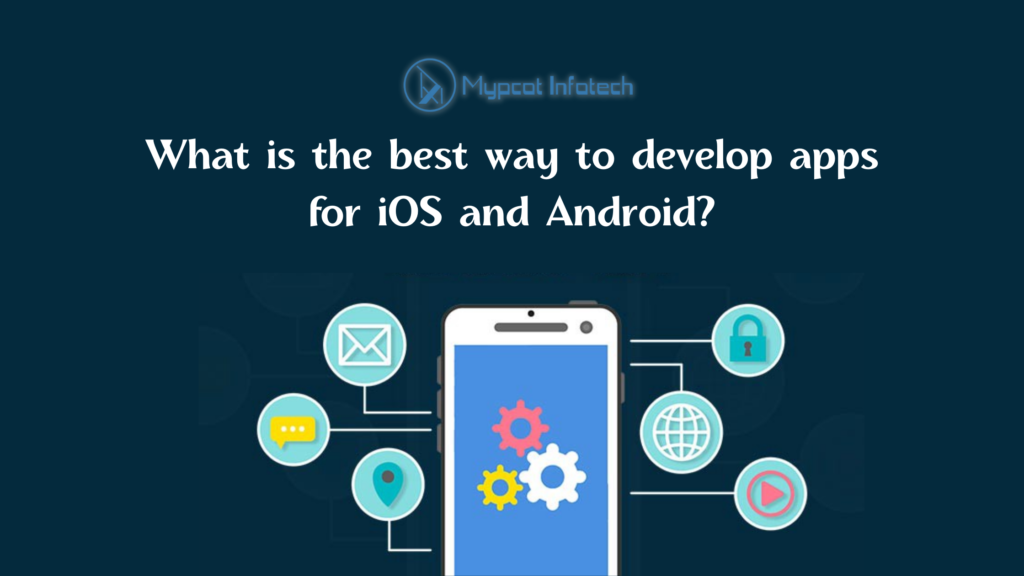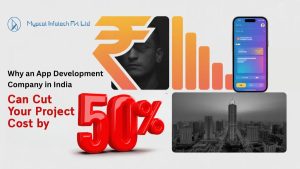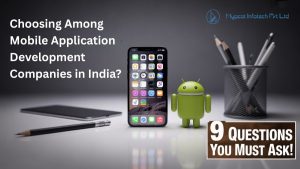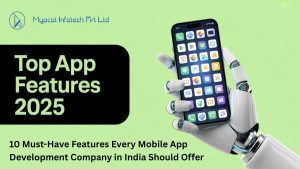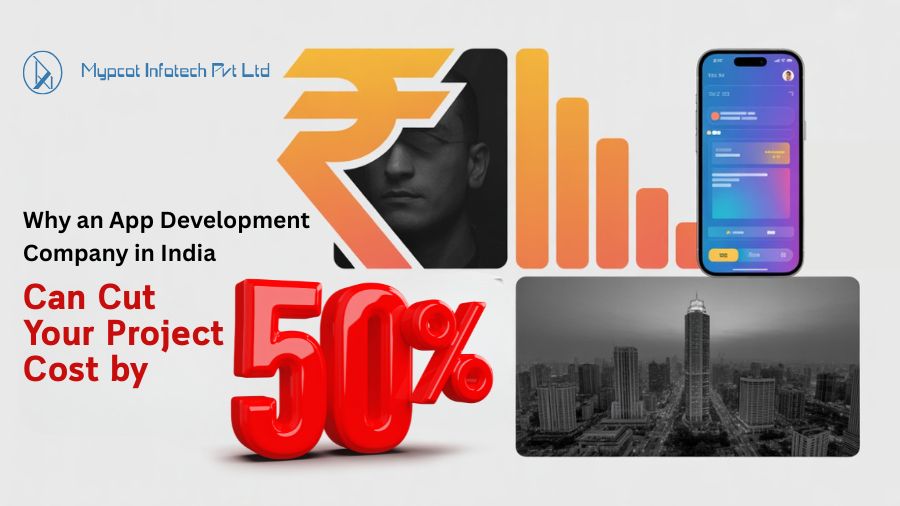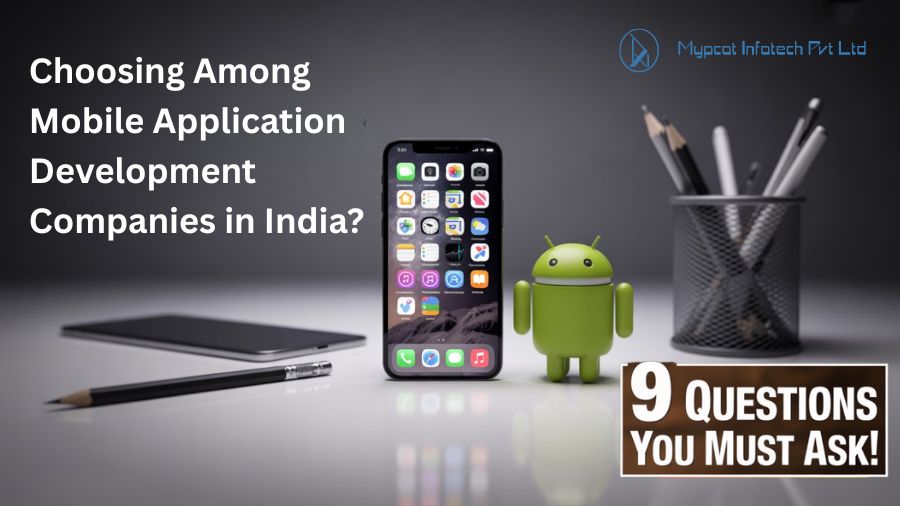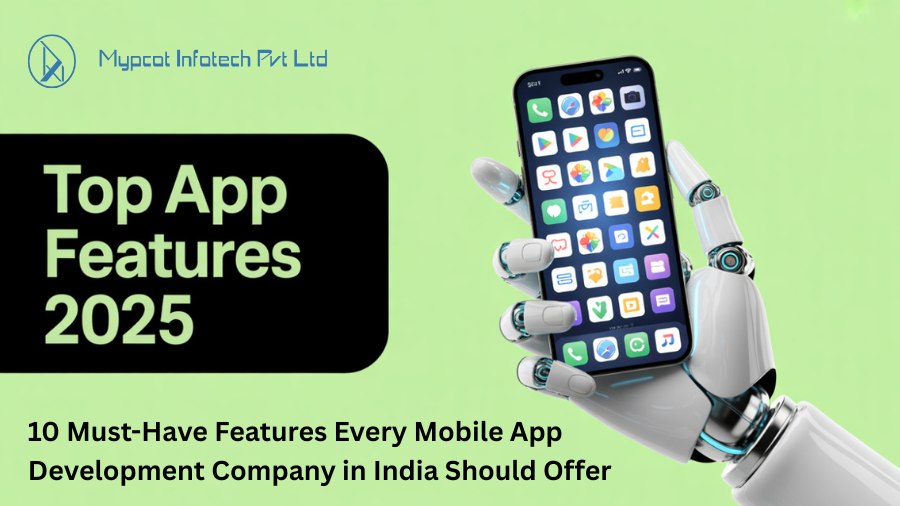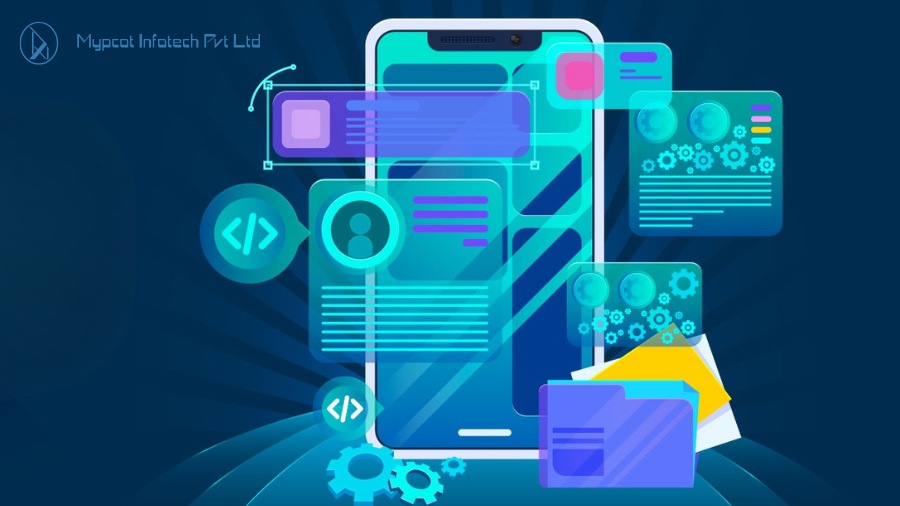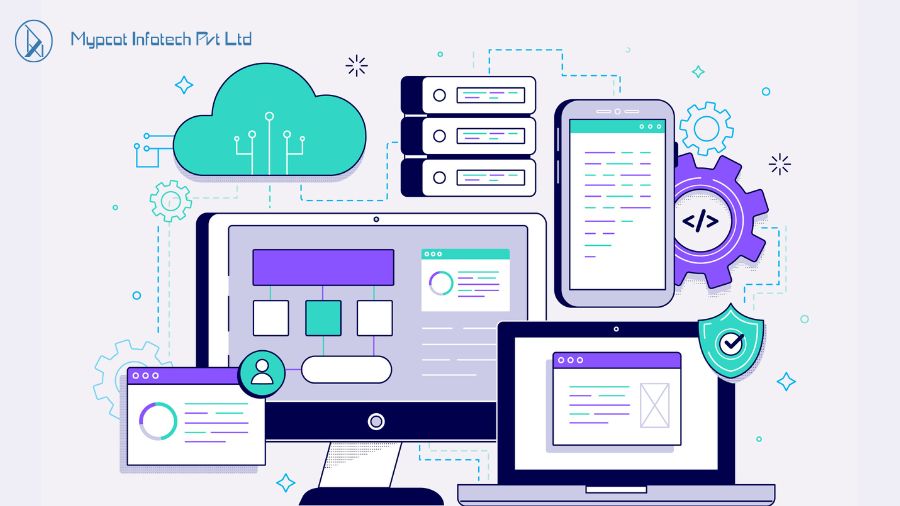In keeping pace with the times, having your own mobile app is an important and essential requirement. Mobile apps are no more a luxury but a necessity for a business. These apps play an important role in building a brand by providing ease of conducting the required business (searches, selections, purchases, after-sales services, and many more). It gets the work done on-the-go. Who had imagined this life where we could order groceries while we were in our office, order food while we are stuck in the traffic, attend classes on a mobile, conduct meetings while travelling or be able to connect with our loved ones anytime from anywhere. But these mobile applications have helped us stay connected and make this giant blue ball of a planet available to us in our palms.
The development of mobile apps has evolved many folds in past few years. The usage of artificial intelligence and machine learning are becoming an integral part of the mobile app design and development process to provide an ultimate UI/UX experience and to make these apps more intuitive. So, when we think of developing an iOS or Android app, it is crucial to understand every minute aspect of the mobile app lifecycle. The process involved in the development of a mobile app can have three aspects:
- The Process Lifecycle (Ideation, Evaluation, Design, Development & Roll-out)
- Technology (Android, iOS, Cross-Platform)
- The Platform (Kotlin, Ionic, Java, Framework 7…)
Table of Contents
ToggleTHE PROCESS LIFECYCLE
In this section we will walk through all the steps that are involved in the app development process from the beginning till the end.
IDEATION:
Like everything else in life, an app also needs a ‘eureka’ moment. The first time that an idea clicks or pushes its way through our minds. We either immediately discuss it or jot down the main points on the nearest writeable platform like a paper napkin or an ever-present whiteboard. It can come from the business side or from the product development side or a user or from anywhere.
PLANNING:
To give this idea a concrete structure, planning is an important aspect. We prepare a planning document. This document answers the general, initial questions on ‘the product’ (mobile app in our case), how we plan to grow the product and how do we plan to have a financially viable and profitable product. To ascertain this, we need to answer the following questions:
- Who is our target audience? :- Are we looking to target kids, working population, gender specific audience, elderly population, location specific users etc.
- What problem does this app help in solving?
- Is this a first of its kind app or there are already existing apps?
- Is the app really required?
- Who are, our competitors?
- How saturated is the market with the desired type of app?
- What benefits will the app users have from installing our app?
- What is our growth and marketing strategy?
- How are we planning to make profits from this app? :- We have different options available for revenue generation like in-app advertisements, or a subscription model, freemium offers, paid services, etc.
ANALYSIS:
Post the discussion in the planning stage, we need to start with the analysis and technical documentation. In this stage we answer some more questions (mostly technical in nature).
- What features do we plan to have in the app? :- we start with designing a wireframe
- What technology to use for app development? Native (iOS, Android), or Cross Platform?
- Perform a pros and cons analysis of each technology
- What platform to use for app development? – Kotlin, Ionic, Java, Framework 7, etc.
- Platform finalization will be based on the technology shortlisted
- Also perform a pros and cons analysis of each platform.
- Each type of technology and platform are useful depending upon the specific purpose and app features
- Development options: we can opt for in-house development (use online app builder or use developers) or outsource the app development process.
- Analyze the cost involved with each technology, each platform and with each development option to ascertain the financial viability of the app
- What type of testing to opt for? – Agile testing or waterfall (traditional) testing?
DESIGN:
At this step, we start to give shape to our vision of the app. We begin to design its look and feel. This is the stage where we:
- Start designing the screen layout – a simple and intuitive UI to maximize UX.
- Develop a style guide: chose the color themes, icon designs, font and font size, button size, etc.
- Define and design a smooth navigation structure.
DEVELOPMENT:
Based on the decision made in the analysis stage on the technology and platform to be used and the development option to go for, the app development process begins.
- The aesthetics are combined with the code to come up with a final product
- The other important functional requirements that must be taken care during the development stage are:
- Responsive app: – the app should be able to function on all device size and all versions of operating systems
- Optimized app size: – users with less mobile memory should be able to install and use it
- Enhanced app security: – ensure updated security measures are used to protect user data
- Structured privacy policy
- Optimized battery usage
- Optimized mobile data usage
- Proper caching options: – cache maintenance in a proper way without affecting the app size and app usage should be one of the goals
TESTING:
Again, as finalized during the analysis stage the development team will carry on the testing.
- Agile testing is the norm these days. Under agile testing the development and testing go hand in hand.
- This testing approach enables corrections, alterations, and enhancements to be made on the spot thus, saving a lot of time.
- But we still need a final testing stage to ensure the cohesive working of the app in each test case scenario and with high system load.
RELEASE:
Once the app is completely tested against all test case scenarios, the D-day arrives. The app is made available to the users.
- App is released on Google Play store and Apple App store
- App feedback is received and analyzed
POST RELEASE SUPPORT:
The work of the business analyst and the developer is not over even after the release of the app.
- Based on the user feedback the required improvements and enhancements are done in the app.
Well begun, is half done.If we have done a good job in the initial stages of planning, analysis and designing the remaining process can be a smooth sail as everyone will know what is expected from whom and how is the final product supposed to look.
THE TECHNOLOGY
As stated earlier, each type of technology is useful depending upon the specific purpose and app features that we intend to have. Both the native technology Android and iOS and cross platform technology have their set of loyal users. So, to decide on which technology to opt for we do a basic pros and cons analysis of each one of them.
NATIVE TECHNOLOGY:
By using native technology, a developer can develop an app for a specific technology only like an Android or an iOS.
- Advantages of development in Native Technology:
- The developed app will be more efficient as it will be optimized according to the device features like easy integration with google assistant in android or with Siri or apple watch in iOS
- It will have technology specific UI & UX thus ensuring smooth functioning of the app
- Disadvantages of development in Native Technology:
- The app will have to be developed on different technologies to have a wider reach. This will need more developers thus increasing the cost of development
- Also, all the upgrades and the maintenance of the app will have to be done on each technology separately thus making it a tedious activity
CROSS PLATFORM TECHNOLOGY:
When the app is created using the cross-platform technology then the source code is shared between the technologies and the framework helps in translating shared code for each of them.
- Advantages of development in Cross Platform Technology:
- Even though the code is shared, but we still have the benefit of using the respective device features
- Since it is developed on a shared platform therefore, less coding work will be required (almost 50-80% development effort is reduced), making it easier to manage and upgrade and in turn makes it cost-effective
- Disadvantages of development in Cross Platform Technology:
- The cross-platform technology may face performance issues due to challenges in integration of the native and non-native components in the code
The businesses will have to decide on the most suitable technology option based on the target audience, app performance consideration and UI consideration and of course the most important the cost factor.
THE PLATFORM
There are too many fishes in the ocean. What we intend to say is that we have wide range of mobile app building platforms available in the market. And these platforms are very cost effective too. Here we list a few of the mobile development apps (in no particular order) that are both trending and useful.
- The Appy Pie
- Appery.io
- Swiftic
- Apps Builder
- Mobile Roadie
- AppMakr
- Caspio
- Nevercode
- JIRA
- BuildFire
- Kotlin
- Ionic
- Java
- Framework 7
Hope this blog gives you a comprehensive view on the various aspects involved in design and development of an app. In case if you need any more details on any of the points or have queries on any of these aspects do let us know. We will be happy to share our knowledge and experience. We at Mypcot as a iOS and Android app development company provide good services and support to our clients. connect with us for best proposal.

